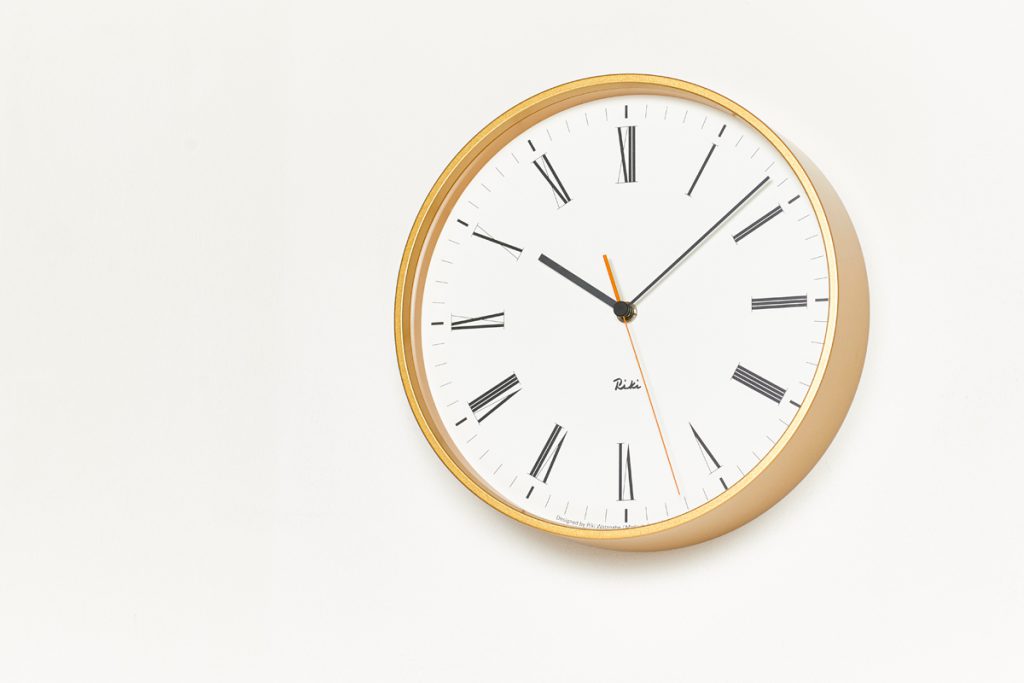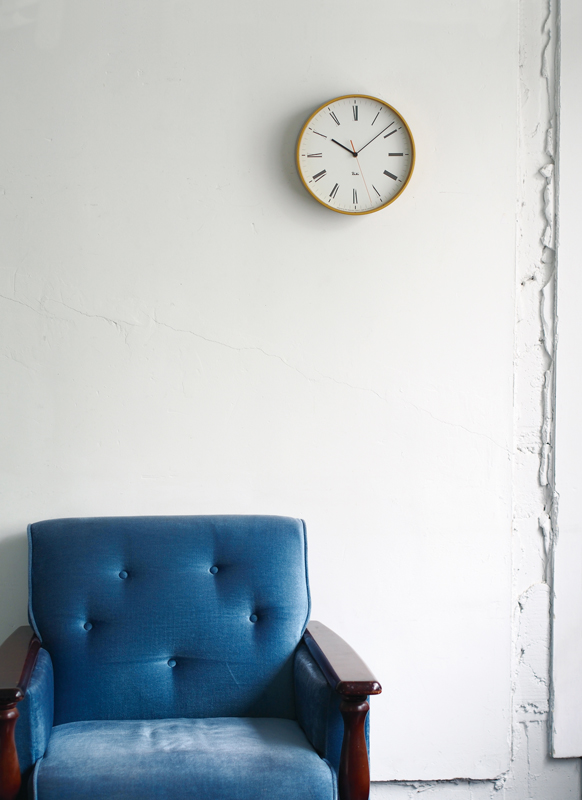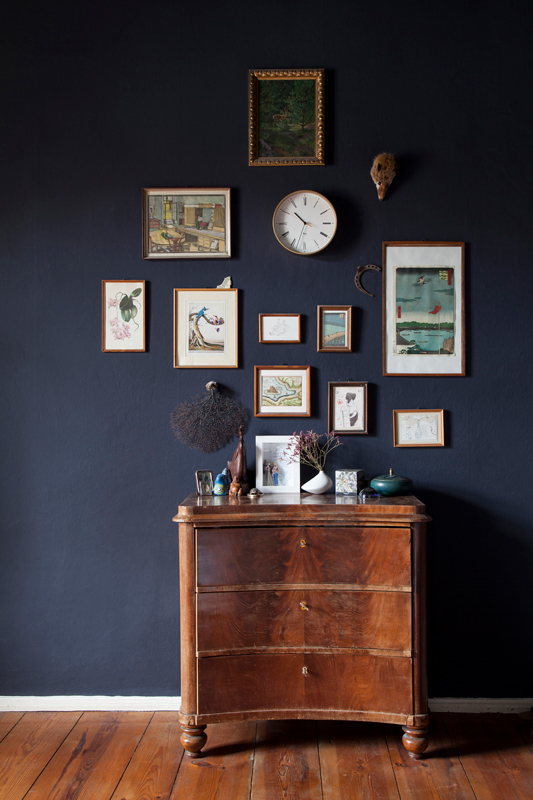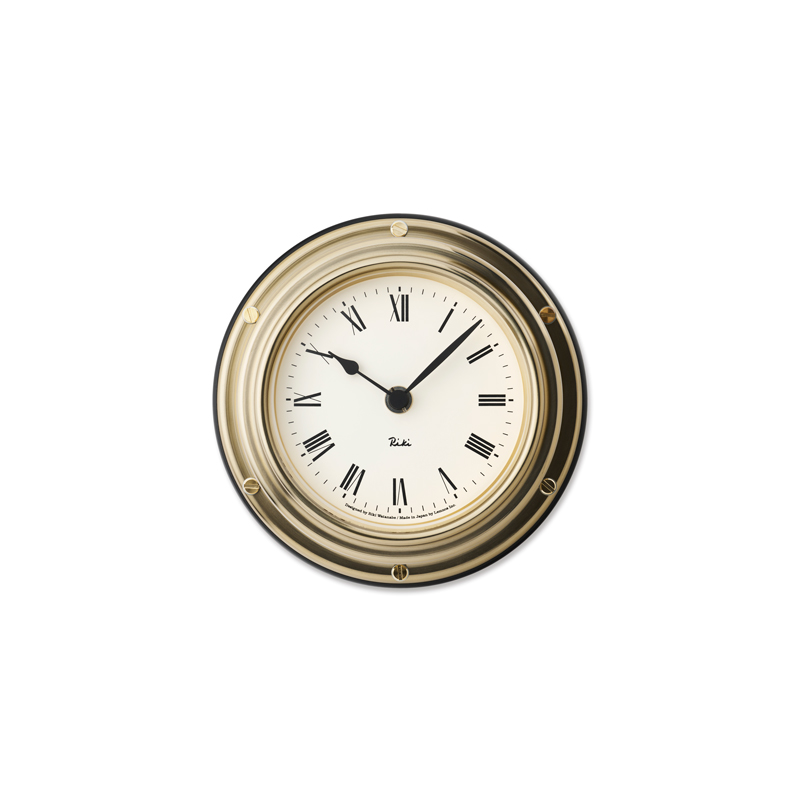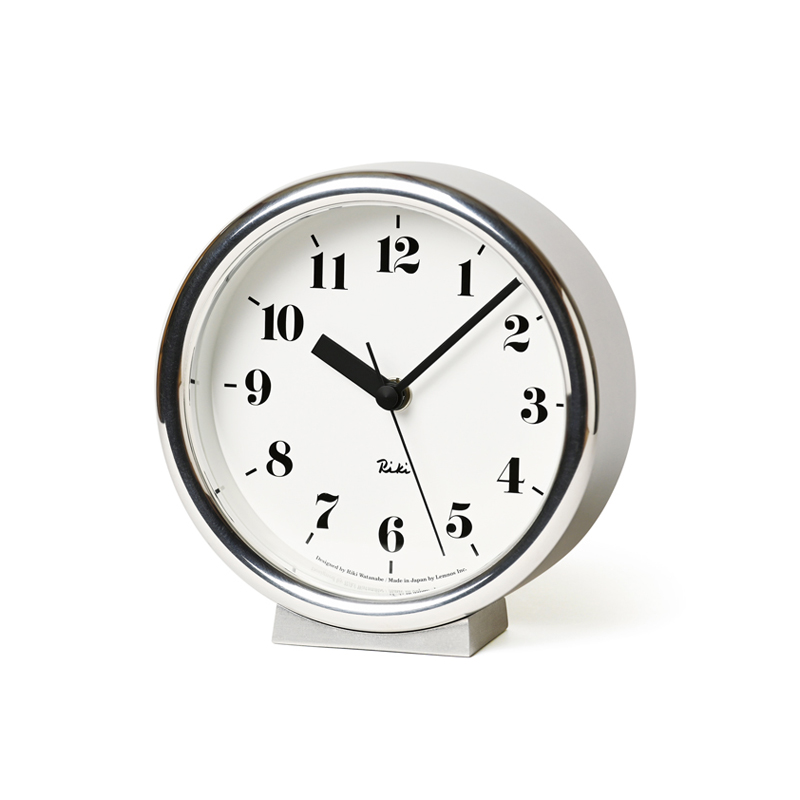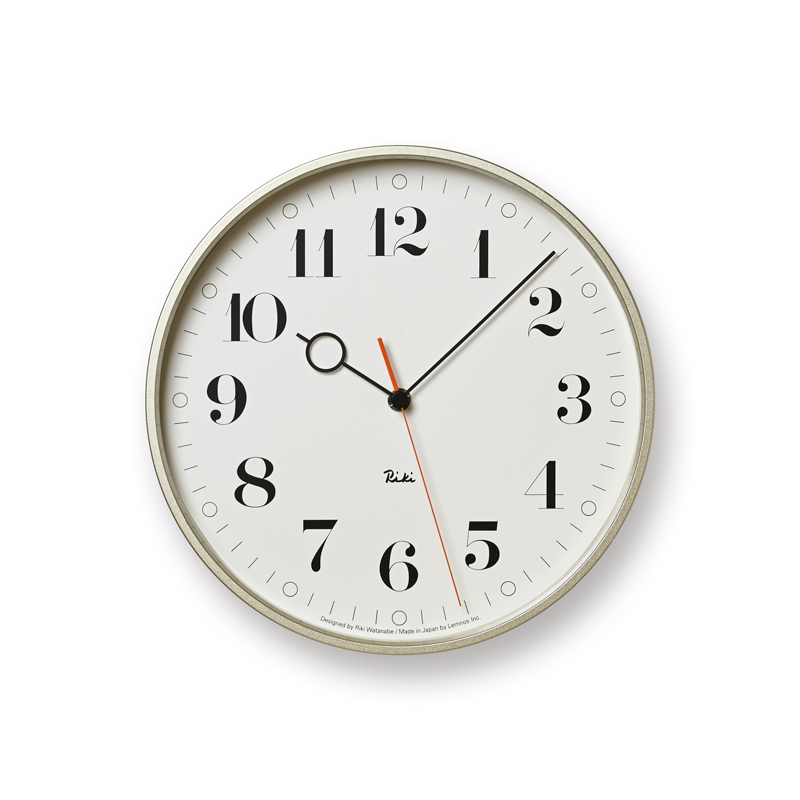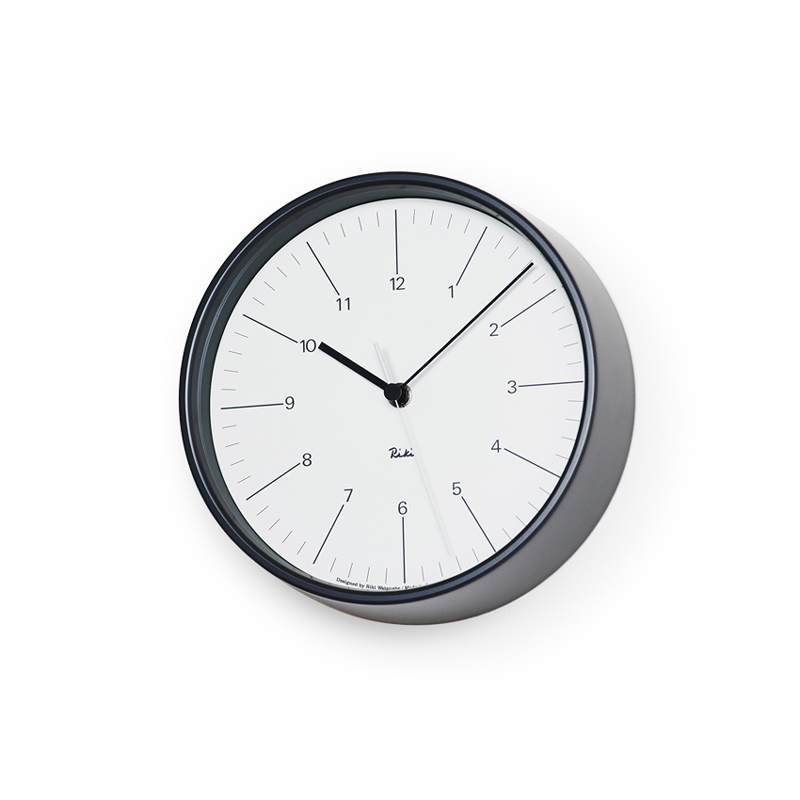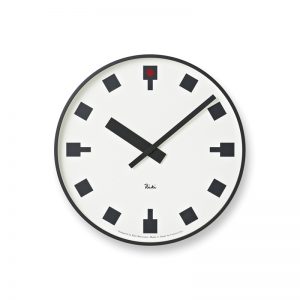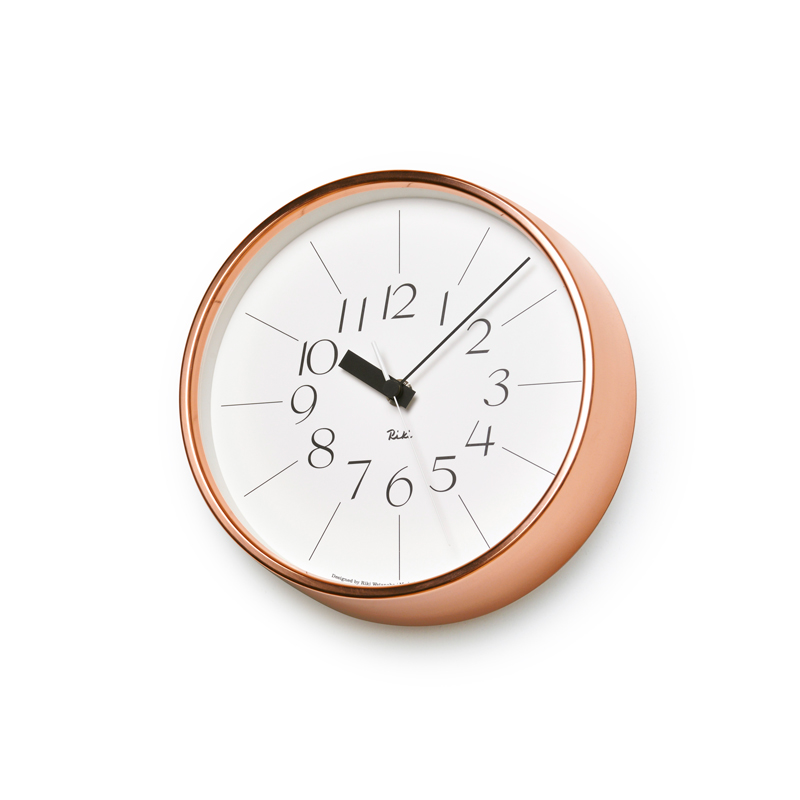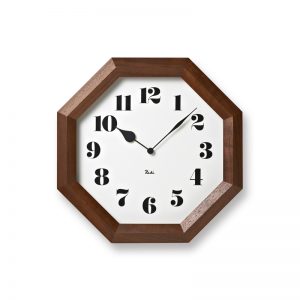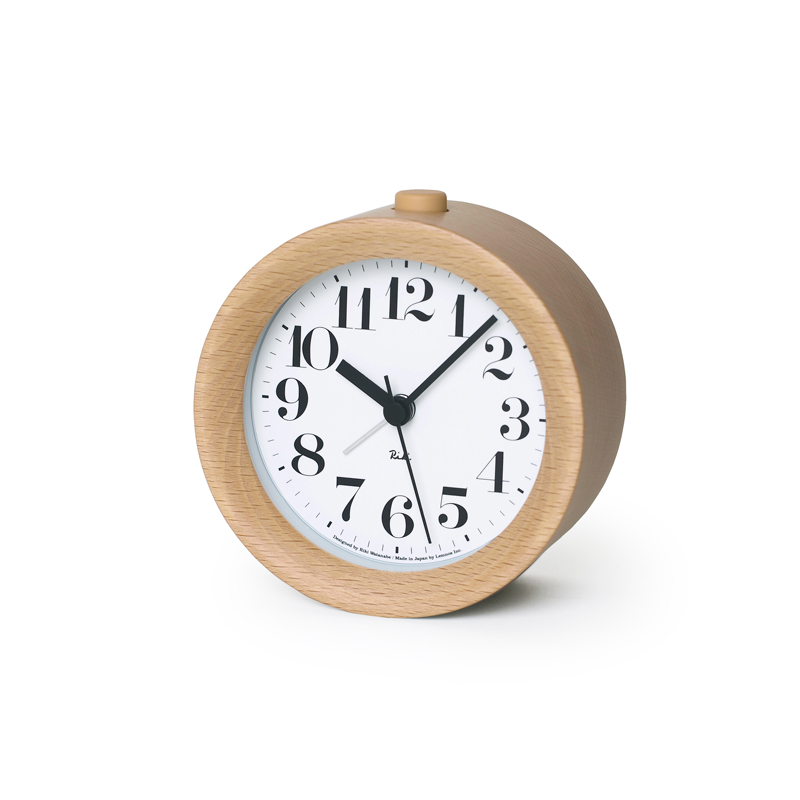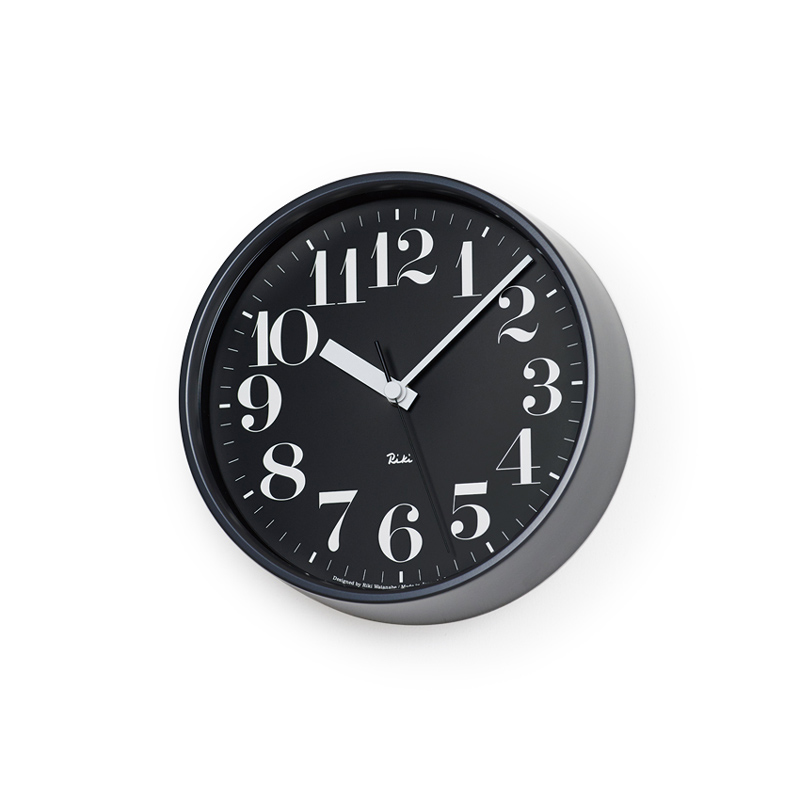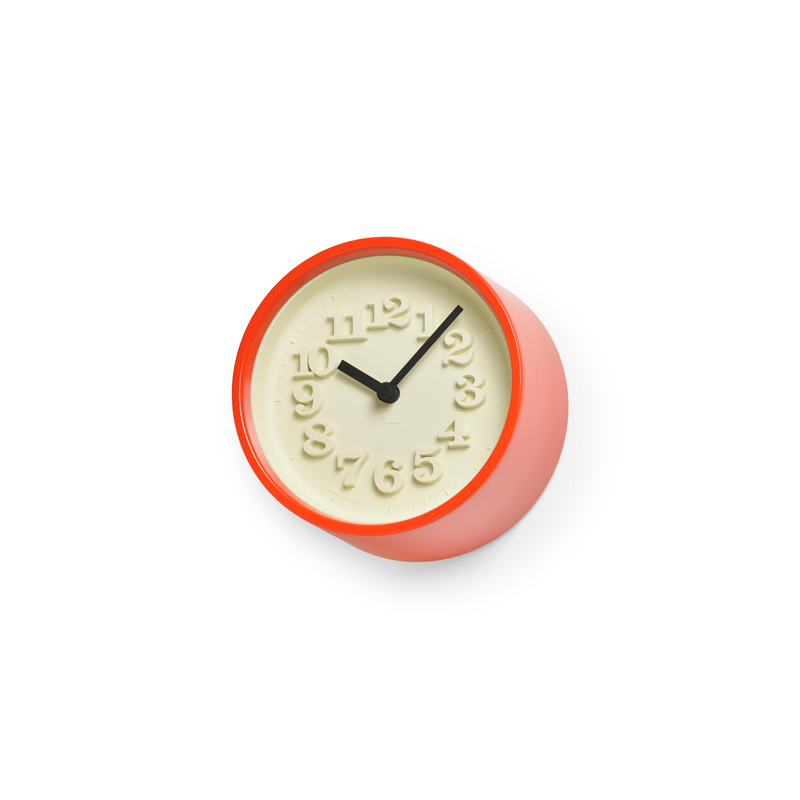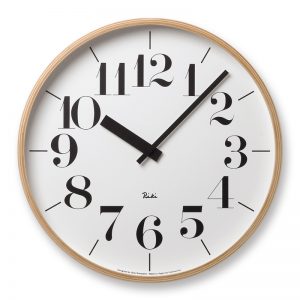RIKI ROMAN CLOCK
design : Riki Watanabe
Clocks with Roman numerals have had a tendency to be decorated with gorgeous frames and hands because of their classical image and the uniformity of their straight lines. In contrast, by drawing attention to the beauty of the linear composition of the Roman numerals, removing the decoration to make the most of the font style, enhancing its delicate sharpness, and striking a balance between the simple hands and the frame, the RIKI ROMAN CLOCK was born in 1977.
At the time of its release, this “dry” impression probably had a big impact. But now it seems like a basic modern clock.
The boldly painted gold color of the clock frame might be the clock’s only decoration.
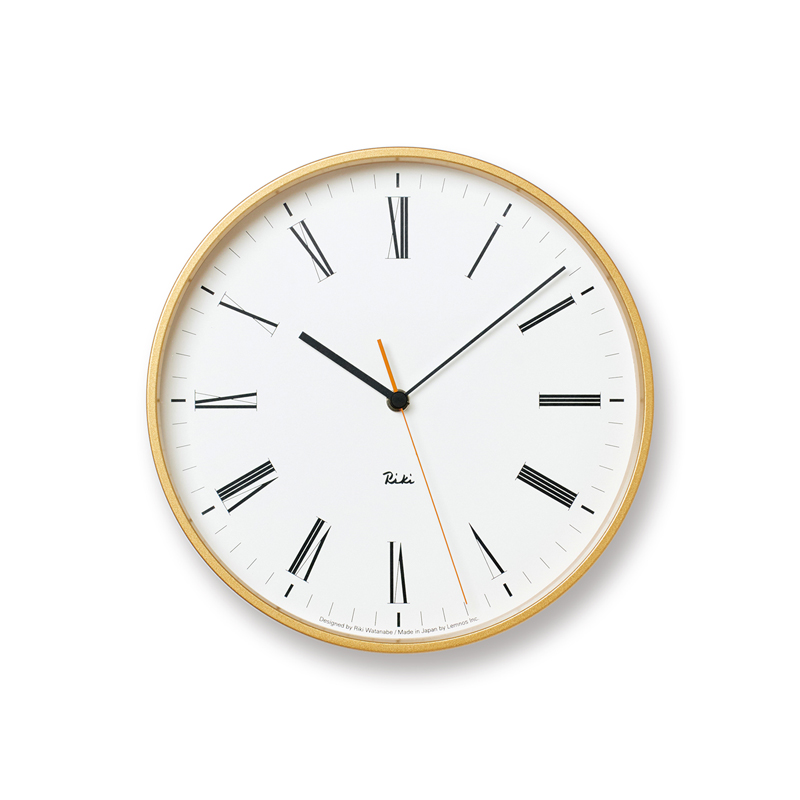

WR17-12
WR17-12
- Size
- φ251 × d60mm
- Weight
- 1,080g
- Material
- Aluminum, Glass
- Specification
- Sweep Second
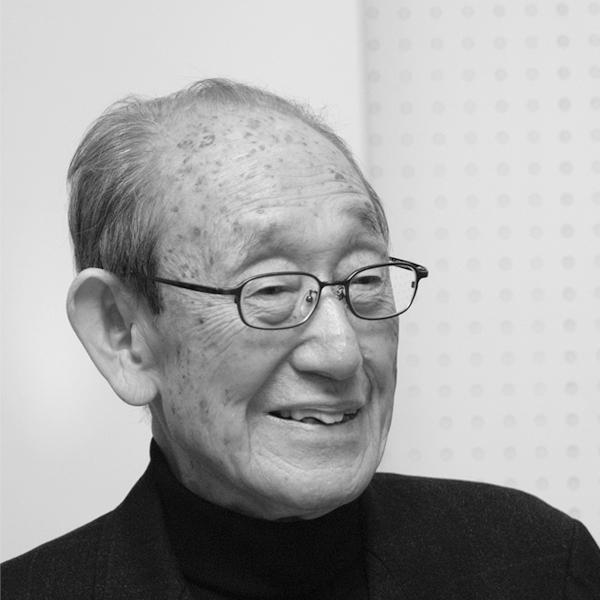
Riki Watanabe
(1911–2013) Graduated from the Woodwork Department of Tokyo High Polytechnic School. After working as an assistant professor at Tokyo High Polytechnic School and as an assistant in the Forestry Department at Tokyo Imperial University (the existing Tokyo University), he established Japan’s first design office, the RIKI WATANABE Design Office, in 1949. His main focus was the establishment of the Interior Architect Department at Tokyo Molding University, Craft Center Japan, Japan Industrial Designer Association and Japan Designers Committee. He designed the interior decor at the Keio Plaza Hotel, Prince Hotel, etc. and furniture such as the “Himo-Isu (Rope chair)” and “Trii-stool”. Moreover, from wall clocks and watches to a public clock called “Hibiya pole clock” at Dai-ichi Life Holdings in Hibiya district, his work on clocks and watches became his lifework. He received the Milano Triennale Gold Medal in 1957, the Mainichi Industrial Design Prize, Shiju hosho(the Medal of Honor with Purple Ribbon), and many other awards/recognitions. In 2006, the “Riki Watanabe – Innovation of Living Design” exhibition was held at the National Museum of Modern Art.

